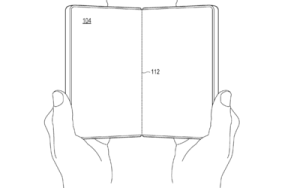Prediabetes is characterized by elevated blood sugar levels that, while not yet reaching the threshold for diabetes, signify an increased risk. Early detection is crucial, as lifestyle modifications can often reverse the condition. While a blood test provides definitive confirmation, your body may also exhibit subtle signs indicating high blood sugar. Here are five potential indicators, although it's important to remember that these symptoms are not exclusive to prediabetes.
An early warning sign of high blood sugar is often increased thirst. When blood sugar levels are elevated, the kidneys work overtime to filter out the excess sugar, leading to increased urine production. This can quickly lead to dehydration.
This creates a cycle: dehydration triggers constant thirst, even with regular water intake. If you find yourself persistently thirsty and making frequent trips to the bathroom, it could be a sign of rising blood sugar levels.
Feeling tired even after adequate sleep can be a significant warning sign. High blood sugar can disrupt the body's ability to efficiently use glucose for energy.
When cells don't receive enough glucose, feelings of weakness and chronic fatigue can arise.

This type of fatigue differs from normal tiredness; it persists even after rest. You might experience difficulty concentrating or staying alert throughout the day. If you experience constant fatigue, including daytime sleepiness, it is advisable to seek medical evaluation.
Prediabetes can sometimes manifest on the skin. The appearance of dark, thick, and velvety patches in areas like the back of the neck, underarms, or groin can be a sign. This condition is known as acanthosis nigricans.

These patches are caused by high insulin levels in the blood, a common characteristic of prediabetes. If you observe these skin changes, particularly if they develop rapidly or worsen, it's a signal that your body may be struggling to regulate blood sugar.
High blood sugar can impair the body's natural ability to heal wounds effectively. If you notice that even minor cuts or bruises are taking an extended period to heal, it could indicate prediabetes.
When blood sugar levels are elevated, the immune system's functionality is compromised, and blood flow to the skin may be reduced. This slows down the healing process and elevates the risk of infections. If you are experiencing wounds that are slow to heal, medical evaluation is important.
Individuals with prediabetes often experience increased hunger, even after meals. This is because the body's cells aren't receiving sufficient glucose for energy. Consequently, the brain signals a need for more food, despite the individual not being truly hungry.
This increased hunger can lead to overeating and subsequent weight gain, further complicating blood sugar control. If you find yourself constantly hungry or craving food, particularly sugary or starchy items, it could be your body signaling an underlying issue.
Older articles
 Popular Finance YouTuber's Account Hacked, Bitcoin Scam Promoted: Security Lessons Learned
Popular Finance YouTuber's Account Hacked, Bitcoin Scam Promoted: Security Lessons Learned
 Suryakumar Yadav Sidelines After Sports Hernia Surgery: Understanding the Injury, Recovery, and Treatment Options
Suryakumar Yadav Sidelines After Sports Hernia Surgery: Understanding the Injury, Recovery, and Treatment Options
 Ashada Gupt Navratri 2025: Unveiling Dates, Timings, Significance & Secret Rituals
Ashada Gupt Navratri 2025: Unveiling Dates, Timings, Significance & Secret Rituals
 Rishabh Pant's Triumphant Return: LSG Owner Sanjiv Goenka Hails Star's Record-Breaking Performance After Near-Fatal Accident
Rishabh Pant's Triumphant Return: LSG Owner Sanjiv Goenka Hails Star's Record-Breaking Performance After Near-Fatal Accident
 Jadeja's Test Performance Criticized: Ex-India Pacer Aaron Slams Inconsistent Bowling in England Loss
Jadeja's Test Performance Criticized: Ex-India Pacer Aaron Slams Inconsistent Bowling in England Loss
 Microsoft Aims for Foldable Redemption with Novel Hinge Design to Rival iPhone and Android
Microsoft Aims for Foldable Redemption with Novel Hinge Design to Rival iPhone and Android
 Hollywood's Love Affair with India: Iconic Film Locations Revealed
Hollywood's Love Affair with India: Iconic Film Locations Revealed
 6 Yoga Poses to Naturally Support Thyroid Function and Hormonal Balance
6 Yoga Poses to Naturally Support Thyroid Function and Hormonal Balance
 Shubman Gill's Captaincy Under Fire: Bold Calls Needed After England Test Defeat
Shubman Gill's Captaincy Under Fire: Bold Calls Needed After England Test Defeat
 India vs. England: Team Preps for Second Test as Bumrah's Absence Raises Workload Management Questions
India vs. England: Team Preps for Second Test as Bumrah's Absence Raises Workload Management Questions